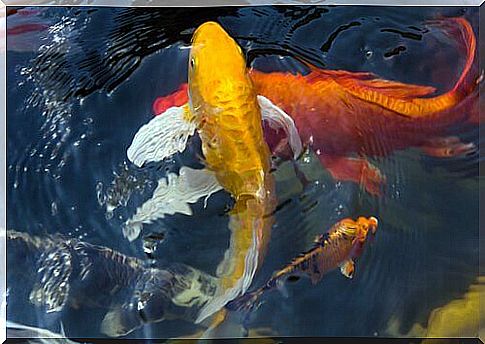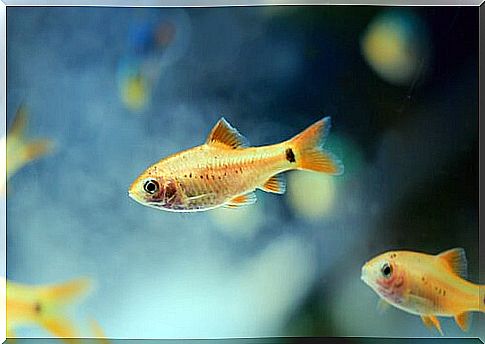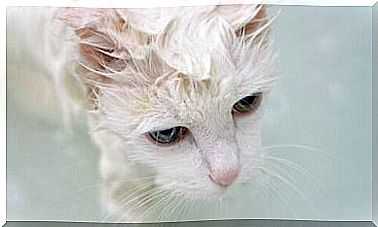River Fish In Italy: The State Of Fluvial Fauna

There are few people who, at first glance, are able to distinguish sea fish from river fish. In reality, as we will explain later, they are very different species. In addition to living in distinct habitats, they possess very marked physical characteristics and physiological peculiarities.
Ours is a country with a great wealth of water and it will be interesting to analyze the situation of river fish in Italy today.
Main differences between river and sea fish
A freshwater species mainly lives in low-salinity environments such as lakes, rivers, lagoons, or streams. Its tissues are rich in phosphorus , magnesium and potassium and have a higher concentration of salts than the external environment.
Due to their characteristics, river fish do not need to drink water and absorb it through the skin. The result is a very soft meat for our palate.
Sea fish, as the name suggests, inhabits high salinity environments such as seas and oceans. His body is rich in sodium , chlorine and iodine , but registers a lower concentration of salts.
These fish need to drink a good amount of water to avoid dehydration. Their meat is tastier and has a distinct taste.
The conservation status of freshwater fish in Italy
The situation of freshwater fish in Italy can be defined simply with one word: critical. In fact, there are currently 31 threatened species (out of 48 belonging to the so-called “inland waters”).
The IUCN ( International Union for Conservation of Nature ) responsible for the famous red list that includes animals at risk of extinction, has recently expanded the endemic species of Italy at risk to 12.
The causes derive, in particular, from the destruction or reduction of habitats and the massive introduction of invasive species.
The studies carried out by the National Wildlife Institute (INFS) have brought to light the critical situation of river fish in Italy.
If plans for safeguarding and conservation are not implemented, their shaky variety could soon be reduced even more.

In the peninsula of the Bel Paese , there are at least 8 species in serious danger and on which action should be taken as soon as possible:
- Po Valley lamprey.
- Cobice sturgeon.
- Macrostigma trout.
- Carpione of the fibrene.
- Marble trout.
- Carpione del Garda.
- Panzarolo.
- Stream goby.
Unfortunately for our fluvial fauna, all of them have long been included in the two categories of highest threat of the IUCN, namely “at risk” and “at critical risk”.
Think that the upper level of emergency is directly that of “extinct in nature” (which may include the presence in captivity of further surviving specimens).
What hurts even more is that they are endemic river fish of our country.
If they became extinct, there would be no way to recover the species by introducing them from other countries, since they only live and reproduce within our borders.
Causes of the high mortality of river fish in Italy
As mentioned earlier, when we wonder about the causes of the possible extinction of these endemic river fish, we need to point the finger at the alterations of the environment.
We are talking about the destruction of many river habitats . Drainage works, canalizations, dams, barriers, locks, water withdrawal for agricultural or even industrial and civil use.
Without forgetting the pollution of water, due to contaminants produced by cities, factories and the result of the illegal dumping of waste.
To this, of course, we must also add the action of individuals. Such as massive or illegal fishing and, of course, the introduction of invasive species, which can occur accidentally or voluntarily.

An example of how harmful these “alien” fish can be is given by the so-called catfish ( Silurus glanis ).
In addition to being a voracious animal, it can reach 2 meters in length and exceed 300 kg in weight.
In the river Po, this fish has caused a massacre of chubs, bleaks and roaches. Furthermore, after fertilization, the females are able to lay up to 30 thousand eggs, in a single laying.
In addition to possible genetic contamination, therefore, it is well understood that these living beings directly compete for survival with river fish in Italy.
This, combined with pollution, fishing and habitat destruction , makes it very difficult to safeguard endemic species.
Can the Italian river fauna be recovered?
At this point, it is legitimate to ask whether there is really the possibility of recovering from the damage done.
On the one hand, there are the needs of a country that needs to exploit rivers and their waters for civil, agricultural and industrial reasons. On the other, there is speculation, the underworld and environmental crimes.
In between, illegal fishing and some wrong repopulation policy, for sporting purposes. It almost seems that, for river fish in Italy, the destiny is already beautiful and sealed.
The main problem is related to the economic expenditure that would have to be faced to restore a situation, if not optimal, at least of equilibrium.
Recovering all the species and returning to the ancient flows of our river fauna would entail unrealistic costs. Think, for example, when talking about pollution, the limitation of some industrial activities. It would be really unthinkable.
Even the ‘ elimination of alien species is not an ethically correct solution. Since it is illogical to exterminate animals to save others. It would be a contradiction.
Last but not least, we must highlight the problem, now chronic in the summer, of drought and water scarcity in several rivers. This phenomenon obviously also threatens the survival of river fish.
In short, there are certainly alternatives to protect and recover some native Italian river fish. But this requires serious and urgent measures, certainly costly.
It is useless to hide behind a finger: these species inevitably depend on the awareness and commitment of society, official government bodies and companies.








